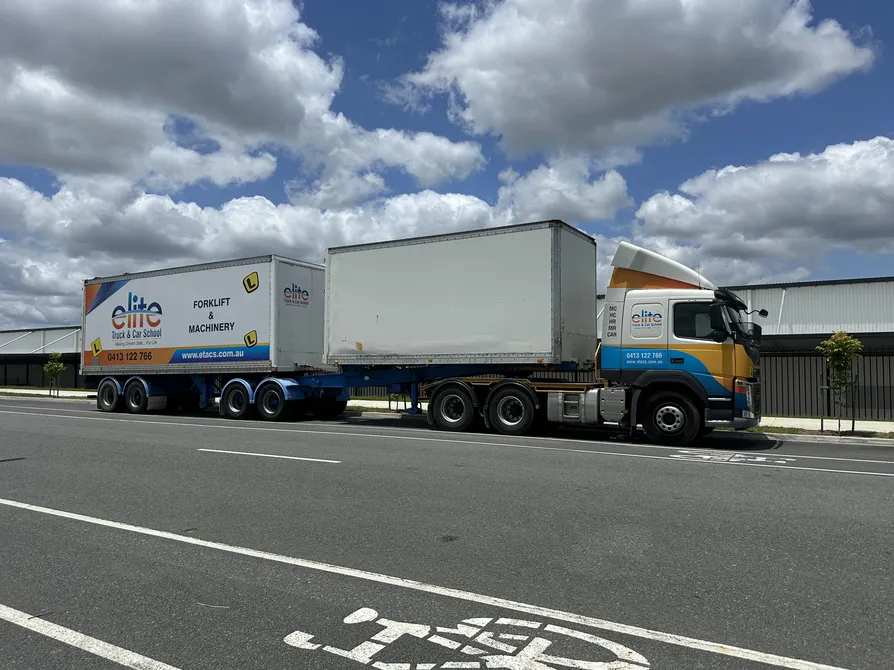Safe Driving Tips for Heavy Vehicle Operators in Severe Weather Conditions (QLD)

Australia’s extreme weather conditions can pose significant challenges for heavy vehicle drivers. Whether you hold an HR, MC, B-Double, or MR licence, ensuring safety on the road during severe weather conditions is critical. High winds, heavy rain, flooding, and extreme heat can all impact truck stability, road traction, and visibility. This guide outlines essential steps to help truck drivers navigate safely through adverse conditions.
Essential steps to help truck drivers navigate safely through adverse conditions
1. Check Weather and Road Conditions Before Departure
Before setting out on your journey, always check the latest weather forecasts and road conditions.
- The Bureau of Meteorology (BoM) (www.bom.gov.au) provides real-time weather alerts and radar images.
- The Queensland Government Traffic and Road Conditions site (www.qldtraffic.qld.gov.au) offers up-to-date information on road closures, hazards, and restrictions.
- The National Heavy Vehicle Regulator (NHVR) (www.nhvr.gov.au) provides safety notices and regulations for truck drivers.
2. Driving in Heavy Rain and Flooded Roads
Wet conditions significantly reduce traction and increase stopping distances. Follow these steps:
- Reduce Speed: Slower speeds improve traction and reaction time.
- Increase Following Distance: Keep at least double the usual space between your truck and the vehicle ahead.
- Avoid Flooded Roads: Even shallow floodwaters can sweep a heavy vehicle off the road. Follow official road closures and never attempt to cross floodwaters.
- Check Wipers and Lights: Ensure your wipers work effectively and use low-beam headlights for better visibility.
3. Navigating High Winds
Strong winds can make handling a high-profile vehicle challenging, particularly for B-Doubles and MC trucks. To stay safe:
- Grip the Steering Wheel Firmly: Sudden gusts can cause lane drift, so maintain a strong hold.
- Avoid Overtaking High-Sided Vehicles: Wind turbulence from large trucks can push vehicles off course.
- Be Cautious on Bridges and Open Roads: Winds are stronger in exposed areas, increasing the risk of rollover.
4. Dealing with Coastal High Tides and Storm Surges
High tides and storm surges can flood roads, especially in low-lying coastal regions.
- Check Tide Charts: If driving in coastal areas, monitor tide schedules.
- Beware of Saltwater Damage: Avoid driving through saltwater as it can corrode truck components.
- Use Alternate Routes: If coastal roads are impacted, plan a safe inland detour.
5. Handling Bushfire Smoke and Extreme Heat
During summer, heat and bushfires create additional hazards for truck drivers.
- Monitor Fire Alerts: Use the Queensland Fire and Emergency Services site (www.qfes.qld.gov.au).
- Stay Hydrated: Heat exhaustion can impair concentration and reaction times.
- Check Tyre Pressure: High temperatures can cause tyre blowouts; ensure they are correctly inflated.
- Use Air Recirculation Mode: When driving through smoke, keep windows closed and use air conditioning to filter air inside the cabin.
6. Assessing Road Conditions
Australian roads can change rapidly due to weather extremes. Always:
- Slow Down on Wet or Unsealed Roads: Heavy vehicles require extra braking distance.
- Watch for Landslides and Debris: Storms can leave roads littered with obstacles.
- Be Cautious in Rural Areas: Animals may wander onto roads during extreme weather events.
Stay Safe and Stay Informed
Every heavy vehicle driver in Australia should take severe weather conditions seriously. By following these essential steps, you can protect yourself, your truck, and other road users. Drive cautiously, plan ahead, and stay updated with official weather and road reports.
For more information, visit:
- Bureau of Meteorology
- Queensland Traffic
- National Heavy Vehicle Regulator
- Queensland Fire and Emergency Services
Stay safe on the road and share this article with fellow truck drivers to promote safer driving in extreme conditions!








